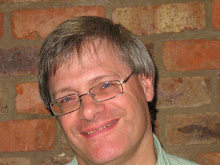Tuesday, November 19, 2013
Saturday, November 16, 2013
Paul Klee
Ann and I went to see the Paul Klee exhibition at the Tate Modern on our anniversary weekend. On Saturday we visited the market at Portobello Road, and on Sunday we saw the exhibition before having lunch with some oaf the family.
Before we ever got to London I learnt that I liked the paintings of August Macke. Of the paintings on the web there were very few I did not really like, bright and colourful, with broad blocks of colour, much like some of Klee's. They travelled together with another friend to Tunisia in 1914, which was very significant for Klee in gaining confidence in using colour. Sadly Macke never saw his thirtieth birthday, as he died in the first world war. Later Klee also fought for Germany, but unbeknown to him, by that time the army were putting artists in less dangerous posts.
At the exhibition the first noticeable thing was how small many of the paintings were. There was often an immense amount of detail, in quite a small area. The paintings repaid a close examination, but it was a mistake not to also view them from a distance.
We have one Klee print at home, and while I now know that he painted in many more styles, I still think of different size blocks of colour as being his signature style. What surprised me was that he developed this style quite early in his career, and continued to use it alongside other techniques. One particlar painting like this from mid way through the chronological exhibition absorbed our attention for a good while while Ann and I sat together discussing it. It was amazing how so apparently simple painting had so much that repaid careful observation.
Whereas our print was watercolour where the blocks of colour ran into each other at points, this was different for having bold lines separating the blocks. I thought line was a major feature of many of the paintings. This was especially apparent in some paintings comprising primarily of blocks, where a few isolated angled lines conveyed the sense of a building.
Drafted in 2014 but not published until 2018.











